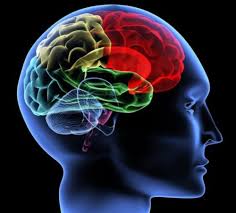Bipolar Disorder – going through intense moods
Do you go through intense moods? Do you feel very happy and energized some days, and very sad and depressed on other days? Do these moods last for a week or more? Do your mood changes make it hard to sleep, stay focused, or go to work?
Some people with these symptoms have bipolar disorder, a serious mental illness. This brochure will give you more information.
What is bipolar disorder?
Bipolar disorder is a serious brain illness. It is also called manic-depressive illness or manic depression. People with bipolar disorder go through unusual mood changes. Sometimes they feel very happy and “up,” and are much more energetic and active than usual. This is called a manic episode. Sometimes people with bipolar disorder feel very sad and “down,” have low energy, and are much less active. This is called depression or a depressive episode.
Bipolar disorder is not the same as the normal ups and downs everyone goes through. The mood swings are more extreme than that and are accompanied by changes in sleep, energy level, and the ability to think clearly. Bipolar symptoms are so strong that they can damage relationships and make it hard to go to school or keep a job. They can also be dangerous. Some people with bipolar disorder try to hurt themselves or attempt suicide.
People with bipolar disorder can get treatment. With help, they can get better and lead successful lives.
Who develops bipolar disorder?
Anyone can develop bipolar disorder. It often starts in a person’s late teen or early adult years. But children and older adults can have bipolar disorder too. The illness usually lasts a lifetime.
Why does someone develop bipolar disorder?
Doctors do not know what causes bipolar disorder, but several things may contribute to the illness. Family genes may be one factor because bipolar disorder sometimes runs in families. However, it is important to know that just because someone in your family has bipolar disorder, it does not mean other members of the family will have it as well. Another factor that may lead to bipolar disorder is the brain structure or the brain function of the person with the disorder. Scientists are finding out more about the disorder by studying it. This research may help doctors do a better job of treating people. Also, this research may help doctors to predict whether a person will get bipolar disorder. One day, doctors may be able to prevent the illness in some people.
What are the symptoms of bipolar disorder?
Bipolar “mood episodes” include unusual mood changes along with unusual sleep habits, activity levels, thoughts, or behavior. People may have manic episodes, depressive episodes, or “mixed” episodes. A mixed episode has both manic and depressive symptoms. These mood episodes cause symptoms that last a week or two or sometimes longer. During an episode, the symptoms last every day for most of the day.
Mood episodes are intense. The feelings are strong and happen along with extreme changes in behavior and energy levels.
People having a manic episode may:
- Feel very “up” or “high”
- Feel “jumpy” or “wired”
- Have trouble sleeping
- Become more active than usual
- Talk really fast about a lot of different things
- Be agitated, irritable, or “touchy”
- Feel like their thoughts are going very fast
- Think they can do a lot of things at once
- Do risky things, like spend a lot of money or have reckless sex
People having a depressive episode may:
- Feel very “down” or sad
- Sleep too much or too little
- Feel like they can’t enjoy anything
- Feel worried and empty
- Have trouble concentrating
- Forget things a lot
- Eat too much or too little
- Feel tired or “slowed down”
- Have trouble sleeping
- Think about death or suicide
Can someone have bipolar disorder along with other problems?
Yes. Sometimes people having very strong mood episodes may have psychotic symptoms. Psychosis affects thoughts and emotions as well as a person’s ability to know what is real and what is not. People with mania and psychotic symptoms may believe they are rich and famous, or have special powers. People with depression and psychotic symptoms may believe they have committed a crime, they have lost all of their money, or that their lives are ruined in some other way.
Sometimes behavior problems go along with mood episodes. A person may drink too much or take drugs. Some people take a lot of risks, like spending too much money or having reckless sex. These problems can damage lives and hurt relationships. Some people with bipolar disorder have trouble keeping a job or doing well in school.
Is bipolar disorder easy to diagnose?
No. Some people have bipolar disorder for years before the illness is diagnosed. This is because bipolar symptoms may seem like several different problems. Family and friends may notice the symptoms but not realize they are part of a bigger problem. A doctor may think the person has a different illness, like schizophrenia or depression.
People with bipolar disorder often have other health problems as well. This may make it hard for doctors to recognize the bipolar disorder. Examples of other illnesses include substance abuse, anxiety disorders, thyroid disease, heart disease, and obesity.
How is bipolar disorder treated?
Right now, there is no cure for bipolar disorder, but treatment can help control symptoms. Most people can get help for mood changes and behavior problems. Steady, dependable treatment works better than treatment that starts and stops. Treatment options include:
1. Medication. There are several types of medication that can help. People respond to medications in different ways, so the type of medication depends on the patient. Sometimes a person needs to try different medications to see which works best.
Medications can cause side effects. Patients should always tell their doctors about these problems. Also, patients should not stop taking a medication without a doctor’s help. Stopping medication suddenly can be dangerous, and it can make bipolar symptoms worse.
2. Therapy. Different kinds of psychotherapy, or “talk” therapy, can help people with bipolar disorder. Therapy can help them change their behavior and manage their lives. It can also help patients get along better with family and friends. Sometimes therapy includes family members.
3. Other treatments. Some people do not get better with medication and therapy. These people may try electroconvulsive therapy, or ECT. This is sometimes called “shock” therapy. ECT provides a quick electric current that can sometimes correct problems in the brain.
Sometimes people take herbal and natural supplements, such as St. John’s wort or omega-3 fatty acids. Talk to your doctor before taking any supplement. Scientists aren’t sure how these products affect people with bipolar disorder. Some people may also need sleep medications during treatment.
Getting Help
If you’re not sure where to get help, call your family doctor. You can also check the phone book for mental health professionals. Hospital doctors can help in an emergency. Finally, the Substance Abuse and Mental Health Services Administration (SAMHSA) has an online tool to help you find mental health services in your area. You can find it here: https://findtreatment.samhsa.gov .
How can I help myself if I have bipolar disorder?
You can help yourself by getting treatment and sticking with it. Recovery takes time, and it’s not easy. But treatment is the best way to start feeling better. Here are some tips:
- Talk with your doctor about your treatment.
- Stay on your medication.
- Keep a routine for eating and sleeping.
- Make sure you get enough sleep.
- Learn to recognize your mood swings.
- Ask a friend or relative to help you stick with your treatment.
- Be patient with yourself. Improvement takes time.
How can I help someone I know with bipolar disorder?
Help your friend or relative see a doctor to get the right diagnosis and treatment. You may need to make the appointment and go to the doctor together. Here are some helpful things you can do:
- Be patient.
- Encourage your friend or relative to talk, and listen carefully.
- Be understanding about mood swings.
- Include your friend or relative in fun activities.
- Remind the person that getting better is possible with the right treatment.
I know someone who is in crisis. What do I do?
If you know someone who might hurt himself or herself, or if you’re thinking about hurting yourself, get help quickly. Here are some things you can do:
- Do not leave the person alone.
- Call your doctor.
- Call 911 or go to the emergency room.
- Call the National Suicide Prevention Lifeline, toll-free:
1-800-273-TALK (8255). The TTY number is 1-800-799-4TTY (4889).
How does bipolar disorder affect friends and family?
When a friend or relative has bipolar disorder, it affects you too. Taking care of someone with bipolar disorder can be stressful. You have to cope with the mood swings and sometimes other problems, such as drinking too much. Sometimes the stress can strain your relationships with other people. Caregivers can miss work or lose free time.
If you are taking care of someone with bipolar disorder, take care of yourself too. Find someone you can talk to about your feelings. Talk with the doctor about support groups for caregivers. If you keep your stress level down, you will do a better job, and it might help your loved one stick to his or her treatment.
For More Information
National Institute of Mental Health
Office of Science Policy, Planning, and Communications
Science Writing, Press, and Dissemination Branch
6001 Executive Boulevard
Room 6200, MSC 9663
Bethesda, MD 20892-9663
Phone: 301-443-4513 or 1-866-615-NIMH (6464) toll-free
TTY: 301-443-8431 or 1-866-415-8051 toll-free
Fax: 301-443-4279
Email: nimhinfo@nih.gov
Website: http://www.nimh.nih.gov
U.S. Department of Health and Human Services
National Institutes of Health
National Institute of Mental Health
November 2015
NIH Publication Number TR 15-3679
Source: https://www.nimh.nih.gov/health/publications/bipolar-disorder/index.shtml





